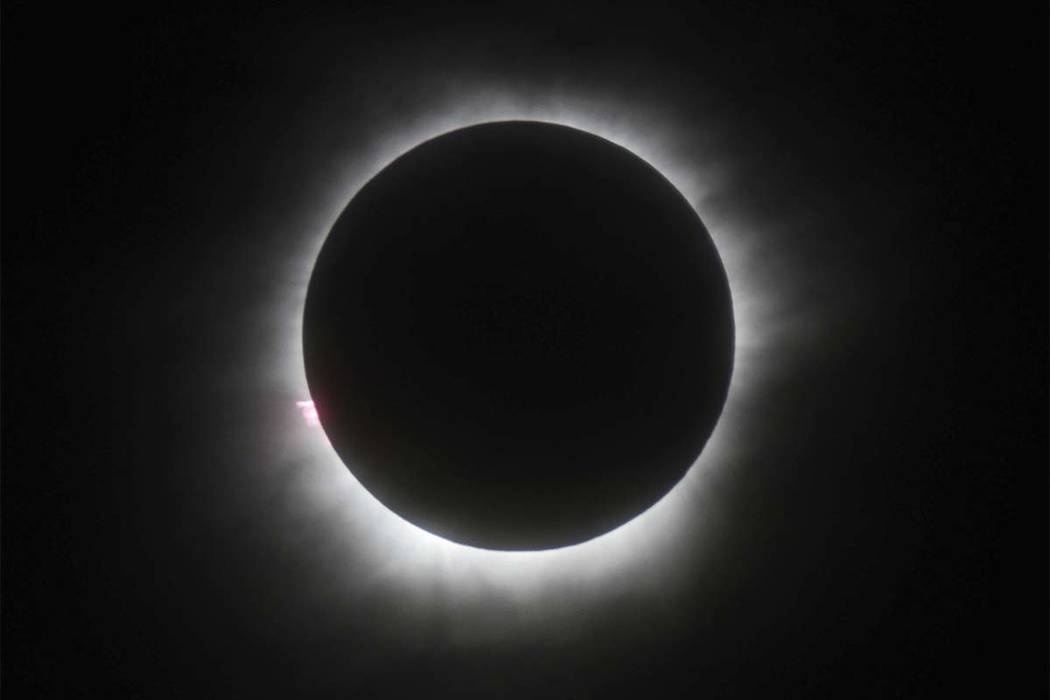How to watch the eclipse if you’re not in ‘path of totality’
LOS ANGELES — Ronald Dantowitz has been looking forward to Monday’s solar eclipse for nearly 40 years.
An astronomer who specializes in solar imaging, he’s been photographing eclipses for more than three decades, and will be using 14 cameras to capture the Aug. 21 celestial event. The cameras have solar filters to capture the eclipse in its partial phases, along with custom modifications that can photograph the corona and light wavelengths that are invisible to the human eye, allowing scientists to view and study the sun’s temperature and composition in a way only possible during a total eclipse, he said.
Dantowitz, who is based at Dexter Southfield School in Brookline, Massachusetts, is lending his expertise to NOVA’s “Eclipse Over America,” airing at 9 p.m. EDT Monday on PBS. That hourlong special, which will incorporate his images, is among extensive coverage planned on TV and online of the first solar eclipse to cross the United States in 99 years.
Still, witnessing totality — when the sun is completely obscured by the moon — is best done with the naked eye, not a camera, Dantowitz said, adding that protective lenses are needed to view partial phases of the eclipse.
“Enjoying totality by eye is more rewarding,” he said. “There is much to see: stars during the daytime, the million-degree solar corona, and seeing the sun blacked out during the daytime.
“I have been waiting almost 40 years for this eclipse, and although I will be operating 14 cameras during totality, I will certainly take a moment to gaze at the eclipse the same way people have done for thousands of years: with wonder.”
For those not in the 14 states comprising the eclipse’s “path of totality,” here’s a look at some of the viewing opportunities online and on TV:
“Eclipse of the Century:” In partnership with Volvo, CNN plans two hours of livestreaming, 360-degree coverage accessible in virtual reality through Oculus and other VR headsets beginning at 1 p.m. EDT. Accompanying television coverage will include reporting from Oregon, Missouri, Tennessee and South Carolina.
“Eclipse Over America:” The PBS science series NOVA is planning a quick turnaround on its eclipse documentary premiering Monday. Senior executive producer Paula S. Apsell said “Eclipse Over America,” which delves into why eclipses occur and what scientists can learn from them, will incorporate images of the event from across the country shot earlier that day with Dantowitz’s high-tech cameras.
“Great American Eclipse:” The Science Channel will broadcast its live coverage from Madras, Oregon, from noon to 4 p.m. EDT, with commentary from educators and astronomers from the Lowell Observatory.
“The Great American Eclipse:” David Muir will anchor ABC’s two hours of live coverage, with correspondents reporting from viewing parties across the country. NBC also plans live coverage, with Lester Holt hosting special reports at 1 and 2 p.m. EDT featuring correspondents reporting from Oregon, Illinois, Wyoming and South Carolina. Shepard Smith will break into typical broadcasting on Fox News Channel from noon to 4 p.m. EDT to update viewers on the eclipse and introduce footage from NASA and observatories around the country.
“Solar Eclipse: Through the Eyes of NASA:” NASA will offer hours of coverage online and on NASA Television beginning at noon Eastern. It plans livestreaming of the eclipse beginning at 1 p.m. EDT with images from satellites, research aircraft, high-altitude balloons and specially modified telescopes.
“The Total Solar Eclipse”: The Weather Channel is kicking off its live coverage at 6 a.m. EDT and continuing throughout the day with dispatches from seven locations along the “path of totality.”






















